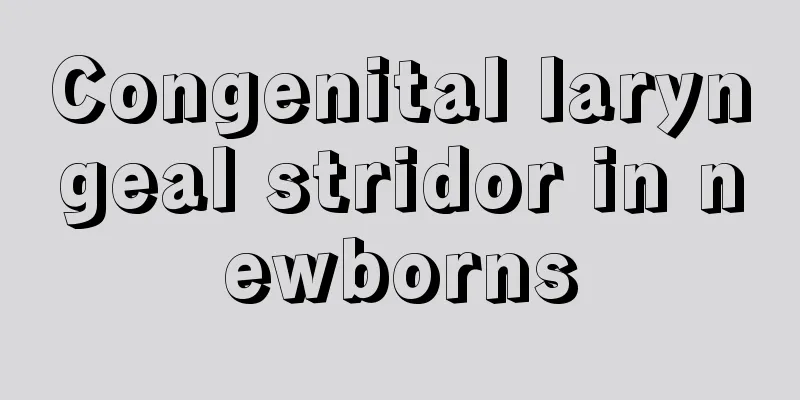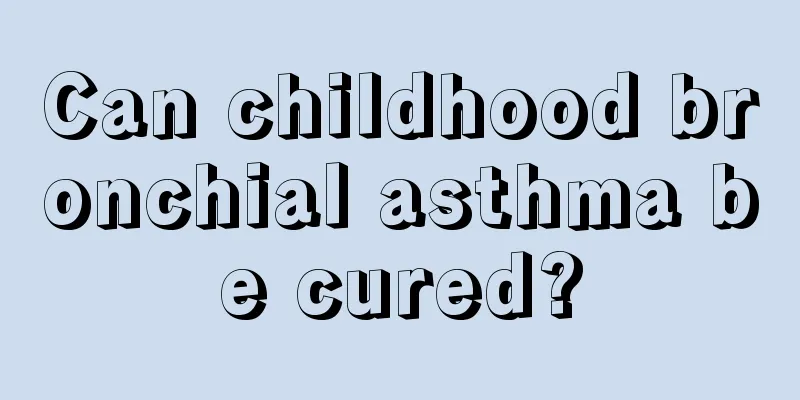Congenital laryngeal stridor in newborns

|
When a baby is born, every parent hopes that the child is healthy, but many babies are born with various diseases. It is the existence of these diseases that makes parents very worried. Congenital laryngeal stridor in newborns is a congenital disease. We must have a full understanding of the situation of this disease. Once we find any abnormality in the child, we must provide timely treatment. Causes Laryngeal softening is the cause of congenital laryngeal stridor. For example, if the epiglottal cartilage is weak, it will block the laryngeal entrance during inhalation, or if the aryepiglottic folds are weak, the aryepiglottic folds on both sides will move closer to each other during inhalation, making the laryngeal cavity narrower. During inhalation, the airflow passes through the narrowed laryngeal cavity and produces laryngeal stridor. Clinical manifestations After birth, the baby has inspiratory stridor, which may be accompanied by inspiratory concave sign, no hoarseness, normal coughing and swallowing, and may choke easily when eating. It may also occur 1 to 2 months after birth, and is usually continuous but can also be intermittent. examine 1. Lateral laryngeal X-ray is normal. 2. Direct laryngoscopy may reveal that the epiglottis cartilage is long and pointed, with both sides curled backwards and touching each other; or the epiglottis is large and soft, with both sides of the epiglottis and the aryepiglottic folds close to each other; there is also loose tissue on the arytenoid cartilage that protrudes toward the glottis and blocks the glottis. diagnosis A preliminary diagnosis can be made based on the inspiratory stridor after birth, accompanied by the three-depression sign, no hoarseness, and normal swallowing. If conditions permit, direct laryngoscopy can be performed. If the epiglottis is found to be curled backwards on both sides or large and soft, or the aryepiglottic folds are loose, direct laryngoscopy can be used to lift the epiglottis, and the stridor will disappear, thus confirming the diagnosis of the disease. Fiberoptic laryngoscopy can also be used to diagnose this disease by observing the shape and activity of the epiglottic cartilage and aryepiglottic wall. treat Symptomatic treatment and surgical treatment if necessary. Usually when the child grows to 2 to 3 years old, the symptoms will resolve on their own as the larynx develops. For such children, we should pay attention to preventing colds and increasing nutrition. For those with obvious dyspnea, different surgical treatment options can be considered according to different types. Patients who are temporarily unable to undergo surgery should consider tracheotomy. |
<<: Does moxa sticks have any effect on babies?
>>: Is it OK for children to eat oranges?
Recommend
What should I do if my child has diarrhea after eating rice noodles?
I believe that for many mothers who have babies, ...
What are the causes of fetal renal cysts?
Renal cyst is a very common tumor and a very comm...
The difference between baby eczema and heat rash
Eczema and heat rash are two common diseases amon...
What are the main symptoms of ADHD in children?
The incidence of ADHD in children is quite high. ...
How to care for erythrasma in babies
Red ringworm on babies is a headache for many par...
What should I do if my child has a bump on the back of his head?
Children love to play, and sometimes it is common...
What does it mean when a baby has milk mucus?
Baby milk mucus usually appears in your baby'...
Diet therapy for one-year-old baby's nose bleeding
Since babies around one year old are still young,...
Premature babies cannot lift their heads at three months old
If a premature baby still cannot lift his head af...
Is it good for children to drink milk before bed?
Drinking milk before going to bed can help you sl...
How to educate a 13-year-old boy
Boys enter puberty when they reach the age of 13....
Can children use enema?
Suppository is a very common laxative, mainly sui...
Why does my baby have tears and mucus?
We parents have all experienced this situation, t...
Symptoms of baby choking on trachea when drinking medicine
Babies' immunity is relatively weaker than th...
How many months is it best to wean babies?
The neighbor has a lovely baby, who is 8 months o...









